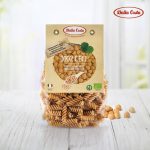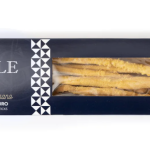
Why are the best artisan pastas so far superior to the mid-range stuff? The basic process for producing dried pasta is fairly simple, and likely familiar, to many folks. Flour and water are mixed into a dough; the dough is extruded through metal dies to create a multitude of shapes and sizes; the freshly pressed pasta is then dried to preserve it. Finally, the pasta is packed and shipped for sale.
But while the basic process is consistent, how can you tell which ones are at the top of the market, and which are only at entry level? And how does a producer go about making a better grade of artisan pastas?
1. High-Quality Grain
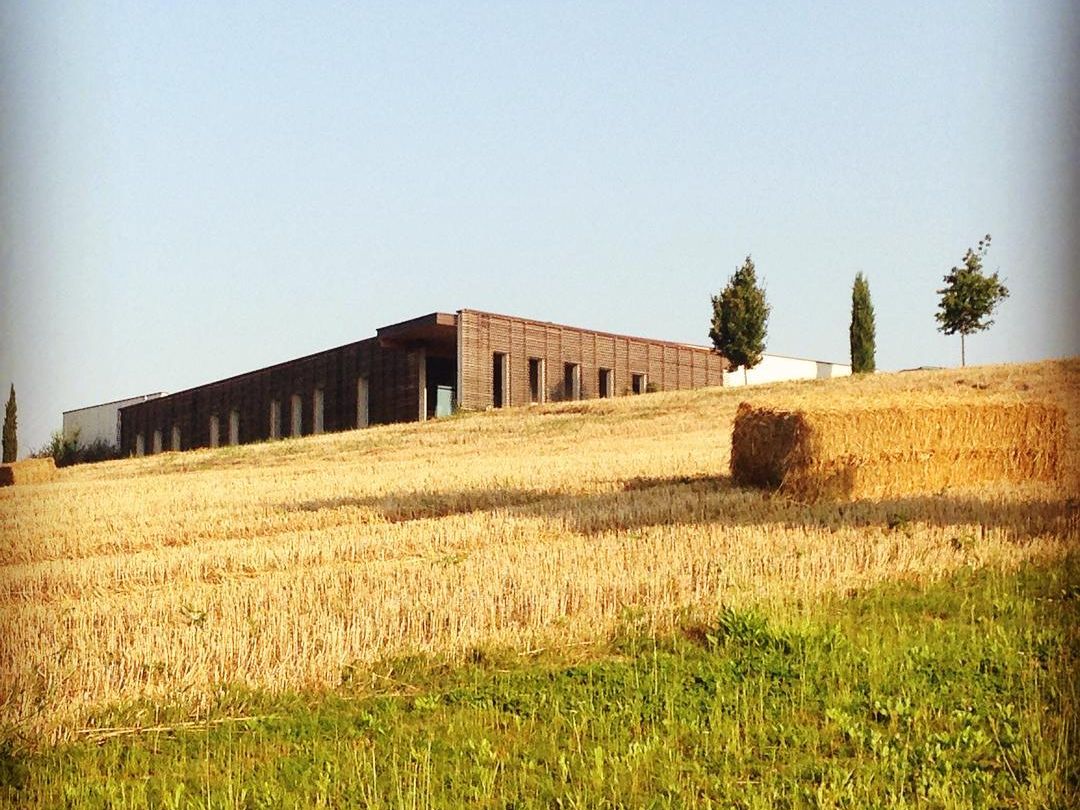
While most folks think of pasta as being made from flour, every producer we’ve met over the years quickly corrects us if we forget and says, usually with great gravity, “grano.” If you go into a small pasta plant, the first thing you’re likely to notice is the smell of the grain. It’s much like the scent of a good bakery—warm humid air, perfumed with the aroma of milled wheat. If you’re serious about pasta, don’t ever take the role of the grain lightly. In his classic The Unprejudiced Palate, written in 1948, Angelo Pellegrini puts it pretty bluntly: “Pasta made with ordinary wheat flour is a phony, and no Italian will use it.”
What’s the alternative to “ordinary wheat flour?”
All the best Italian dried pastas start with semola di grano duro, (durum semolina), the coarsest grade of milled endosperm from hard wheat (triticum durum). In fact, since 1967 Italian law has actually required it. Unlike flour which is very finely milled to a powder, semolina is granular in structure, almost like sugar crystals or medium-ground cornmeal in texture. Durum semolina makes superior pasta primarily because of its high gluten content—when properly developed in the dough by the maker, these glutens trap the starch inside the pasta and keep it from flowing out into the cooking water. Additionally, the glutens help to insure the firmness of texture which is such an essential element in great pasta. Because of its harder nature, durum semolina requires longer kneading, adding time and cost, but contributing mightily to the flavor and texture of the finished pasta. It also gives the glowing golden appearance that is so typical of Italian pasta (as opposed to the whiter look of low-end products. Early in the 20th-century unscrupulous pasta makers used to add colorings to give their inferior product the look of semolina.)
Unfortunately, only Italy imposes such a requirement for the use of semolina. In other countries, it’s perfectly permissible for a pasta maker to start with soft wheat (triticum vulgarum), which is far less costly, but produces inferior pasta. Angelo Pellegrini writes that soft wheat pasta “’mushes’ up, falls apart, and sticks to the teeth.” You can usually spot soft wheat pastas as soon as you drop them into boiling water; the paste breaks down and leaves the cooking liquid looking cloudy.
Unfortunately, buying the best pasta isn’t just a function of finding a label that lists “semolina” in its ingredients. In his excellent 1986 essay in the Atlantic Monthly, Corby Kummer reported that, “Italian manufacturers are known for their skill at blending many durums to achieve the color and texture they seek.” Just as coffee roasters work with an array of green beans, the best pasta makers are masters at buying and blending durum semolina from various sources. Each producer has their own recipe, sources, and mix; long before the grain ever gets into the pasta machines, the pasta maker adjusts his or her sources annually to take into account alterations in crop yields and flavor. The variety of the wheat is important; as with other agricultural products, older varieties of wheat often yield the most flavorful grain, but also have lower yields and higher risk of disease which keep more cost-conscious producers at arm’s length. And, of course, the soil in which the grain is grown plays its part as well. Some pasta makers prefer wheat from the various regions of Italy; others won’t buy anything but Canadian durum.
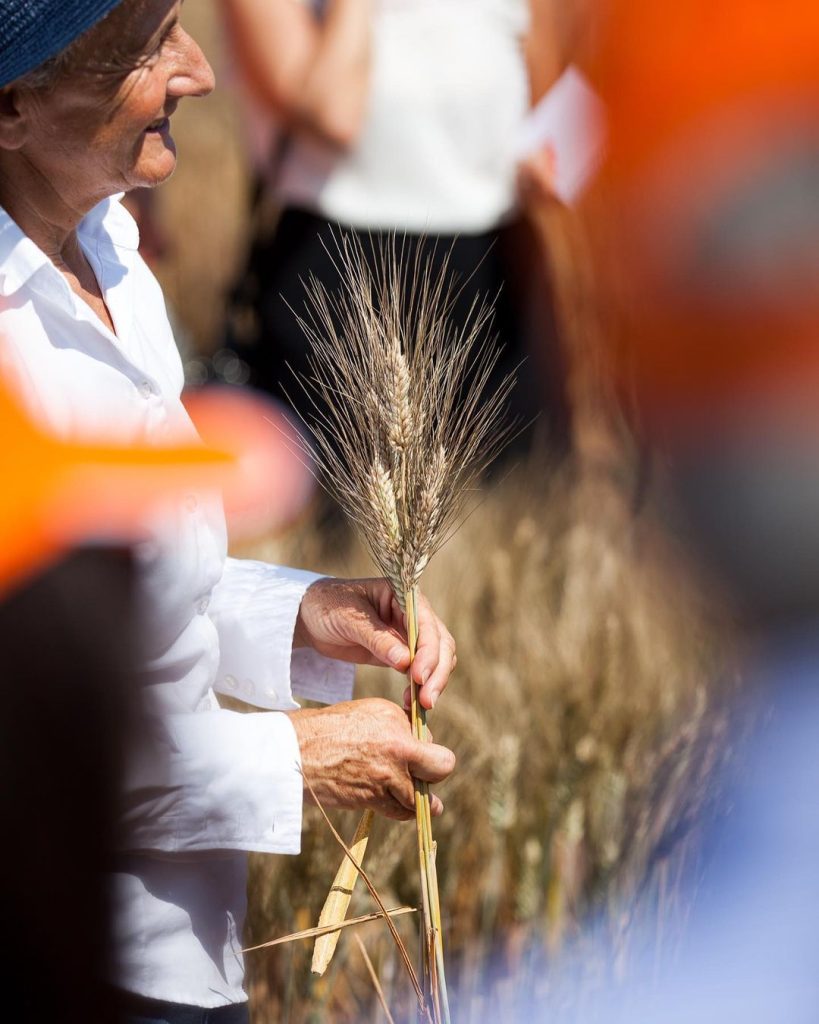
Better Wheat = Better Pasta = Better Flavor
Not surprisingly, the wheat plays a major role in the pasta’s flavor. Americans often approach pasta as little more than a convenient way to convey large quantities of sauce from plate to palate. But for serious Italian eaters, the point is the pasta as much as it is the sauce. Guess what? Good pasta actually tastes good. Yes, the pasta itself is supposed to have a flavor and integrity of its own to offer. I’m not talking about the finished dish here. Just the noodles.
To fully grasp why Italians put so much more emphasis on the flavor and texture of the pasta they put on their plates, it’s important to understand that in Italy the serving ratio of sauce to pasta is far lower than is considered “standard” in most of North America. Italians generally offer smaller servings, lightly tossed with a sauce, or simply served with a dollop of sauce sitting atop the noodles. By Italian standards, the sauce should accent, never overwhelm; no upstanding Italian chef would ever drown a pasta dish in sauce. With this in mind, it only makes sense that the pasta itself has to have flavor and character of its own.
2. (H2)Oh Yes, Water Matters!
Although few people think about it, the flavor of the water with which the grain is mixed is a matter of great concern to quality-oriented pasta makers. Since the water in any given area has its own chemical and mineral makeup, it will alter the flavor of any item it’s blended with; it’s the same story with brewing coffee or tea. A bag of the same grain, mixed in California instead of Campania, is likely to yield different flavors in the finished pasta.
3. Mindful Mixing
As it would with bread dough, excessive heat during mixing is the enemy of the quality-conscious producer. Instead, slow, gentle, low-temperature mixing helps to preserve the natural character and flavor of the wheat. Gentler kneading also allows the pastaio (the pasta maker) to mix for a longer period of time, enhancing the glutens in the dough which are so essential to creating a vital, vibrant texture. Finally, the traditional pasta maker must be ready and able to adjust her mixing to changes in weather and humidity, just as her counterpart, the artisan baker, would do with bread baking.
4. Bronze-Die Extrusion
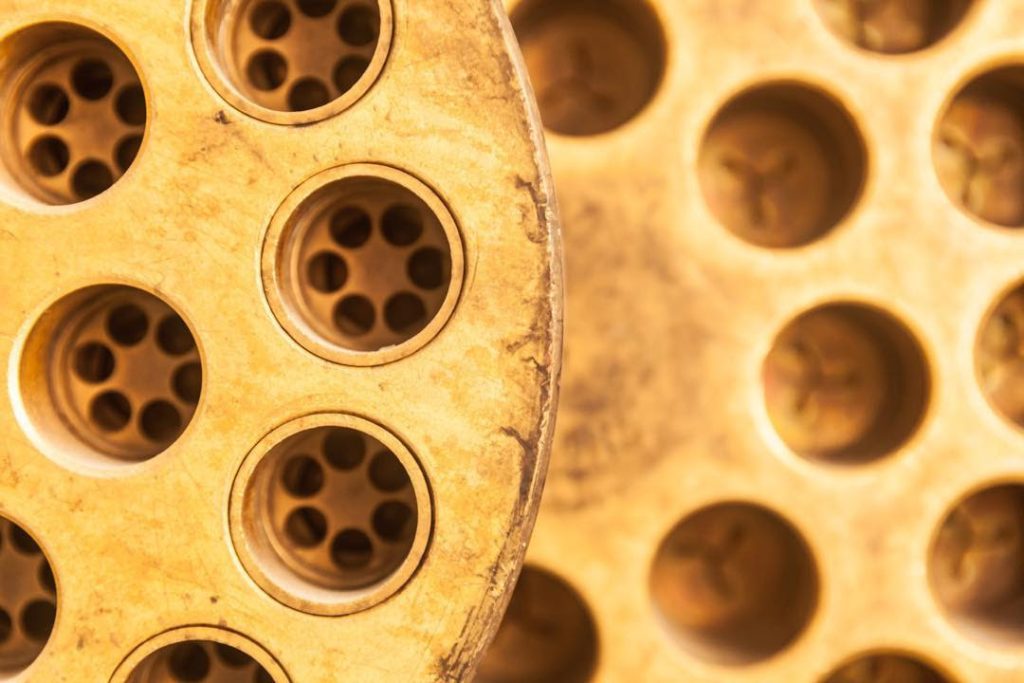
Once the dough has been mixed, it’s then extruded through variously shaped dies. The early forms were developed at the end of the 19th century, allowing pasta makers to expand the variety of their offerings significantly. Previously noodles had to be hand cut. But now, for the (not insignificant) cost of designing and making a new form, a pastaficio (pasta factory) could produce an additional pasta shape.
Strands of spaghetti or other long pastas are pushed through small holes, then cut at the appropriate length by rotating blades. Short tubular pastas like penne start out by winding their way around a rod suspended from the top of the die, then exit by a smaller hole at the bottom. This narrowing forces the dough to come back to form the hollow tubes and twists we’re all accustomed to. Notches in the holes can force the exiting dough to curve or curl, conjuring shapes like “elbow” maccheroni.
Some modern operations now extrude through smooth-surfaced, Teflon-coated dies. The Teflon lasts longer and allows for more rapid (and hence cost-reducing) extrusion. Without knowing a thing about the technicalities of pasta making, you’ll find the difference starts to show up as soon as you open the box or bag and lay your hands on it. It yields a pasta so slick it almost seems as to have been shined. When you dress it, your sauce is almost certain to run right off; instead of the well-integrated combo of sauce and pasta Italians prefer, you’ll end up with a bunch of nearly naked noodles laying atop an unappealing pool of sauce.
The best artisan pastas, on the other hand, are those that are extruded through old-style bronze dies, what Italians refer to astrafile di bronze. An essential component of artisan pasta making, the bronze dies are themselves an artisan product. Although the first phases of their production are now done by machine, the dies must still be checked, adjusted, and finished by hand to get them to produce near-perfect pasta. Bronze is a softer metal, meaning the life of the dies is shorter, the extrusion is slower, and replacement costs are higher. But the beauty of these old-fashioned forms is that they produce pasta with a coarser, more porous, surface—the seemingly sea-washed roughness you feel when you hold it in your hand. This isn’t just an issue of aesthetics. The little pits embrace the sauce with open arms. As you eat you get effective integration; the flavor of the pasta is intertwined with the flavor of the sauce.
Take note, too, that the speed of extrusion can also impact quality. In pasta making, as on the highway, speed kills; it can cause unwanted heat, and hence, damage to both texture and flavor. Those who take the extrusion process at a more leisurely pace protect the natural glutens in the dough, which in turn ensures that the pasta’s all-important texture is preserved during cooking.

5. Careful Drying
The drying takes the moisture content of the fresh dough down to less than half of its original 25 percent, giving packaged pasta its long shelf life, and arguably making it mankind’s ultimate convenience food. Seemingly simple. But as Harold McGee says in On Food and Cooking, “Drying is the trickiest step in pasta manufacture.”
Three Steps to Sun-Drying Pasta
Up until earlier in this century, all Italian pasta was dried in the sun, often for up to a week, to reach the desired level of desiccation. Pasta makers, it was said, had to be as good at reading the weather as fishermen or farmers. Before computers or commercial machines had mechanized the process, drying was a difficult craft to master, akin to the skillful sensory work done by prosciutto makers, who adjust airflow as the temperature, wind, and humidity change in order to achieve the ultimate in flavor through traditional curing. The same was true of drying pasta. The three stages of pasta drying in that era were:
- Incartamento: This is when the drying created a natural crust on the outside of the still-soft pasta. Traditionally, this was done by putting racks of fresh pasta out into direct sunlight.
- Rinvenimento: This second stage allowed the pasta to “recover” from its initial experience in the sun. The drying racks were put into a room that was about forty degrees cooler than during the incartamento. Pasta at this stage was stored as close to the floor as possible, or, alternatively, in cool cellars, where the lower temperature and higher humidity slightly softened its crust.
- Essiccazione definitiva: This “final drying” stage was usually done in shaded areas, often courtyards or attics, where the pasta was gradually dried most of the rest of the way through. For long pastas like linguine, this was particularly challenging—the pasta had to be shifted between warmer and cooler temperatures to get the drying just right. As with ham curing, the process could be managed by moving the pasta from one room to the next, or by opening or closing windows to catch the proper breezes.

You can see pretty quickly why dried pasta was a luxury item. At best, in settings where the climate was close to ideal, the necessary temperature swings could be obtained by simply sticking with the natural atmospheric changes over a period of a week or more. Drying in the winter, even in the South, took two to three times as long as it did in the summer, or in many areas couldn’t be done at all. Pasta that was to be shipped abroad was dried longer than that which was sold for local consumption in the reasonable belief that it needed to hold up longer.
Sadly, in these days of air pollution and depleted ozone layers, sun-drying noodles is no longer an option. But fortunately for food lovers, pasta drying machines were invented around the turn of the last century. While most people assume that pasta is just flour—whoops, grain—and water mixed, shaped, and dried, one of the keys to flavor is that well-made pasta is actually a fermented product. Longer, gentle drying allows for more effective, slower fermentation, which, just as with cheese making, bread baking, or converting wine to vinegar, means fuller flavor. You can’t see it on the box, but you can definitely taste the difference.
Each pasta maker has a “recipe” for drying, and each seems certain that his or her technique is the best. Faster moving, more cost-conscious factories use high heat to dry the pasta in a mere matter of hours. The problem with this speed-dried stuff is that the excessive heat essentially “bakes” the pasta; the finished noodles are often brittle and easily broken, and many of the subtleties of the grain may be lost.
Smaller, artisan pastaio work at much lower temperatures than their industrial counterparts, taking as long as twenty-four, thirty-six, forty-eight, or even fifty-plus hours to dry their pasta. This type of drying takes place in very warm (but never high heat) humid environments in which moisture can be reduced slowly, without damaging the texture of the finished product.
While the production of artisan pasta may seem straightforward in theory, it is difficult to do well. Machines may do the actual extrusion, but the human element remains essential. Watching the artisan pasta production at Martelli in Lari, one will notice that every so often, Dino Martelli would grab a piece and pop it—raw—into his mouth. “Are you checking the pasta?” we inquire with a bit of uncertainty. Who eats raw pasta after all? “Absolutely!” he answers adamantly, as if we should have known that from the beginning. “We check the pasta by taste and by feel all the time.” Like cheesemaking or bread baking, traditional pasta production remains a craft, not a science.
 Procure Some for Yourself—We Bet You Really Can Taste the Difference
Procure Some for Yourself—We Bet You Really Can Taste the Difference
The best news of all that is that great dried pasta is probably more accessible than ever—top-grade artisan pastas remains, in our opinion, one of the most affordable of the world’s finest foods. If you like really good food and you like to eat really well, take a chance and try some for dinner this month—the risk is very small.
P.S. Check out our pasta cooking tips from Mo Frechette, Zingerman’s Mail Order Managing Partner and fellow pasta importer, so you’re sure to have the best possible tasting pasta!

